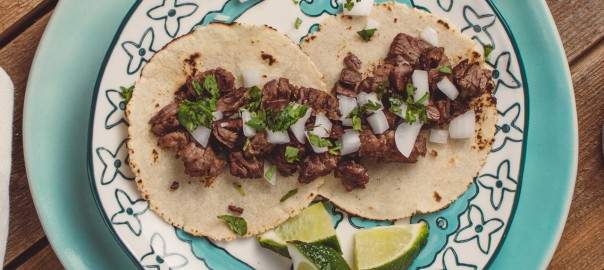Whether as a marinade or a sauce, it’s tough to deny that one of the best complements to a good steak is some freshly made chimichurri sauce.
Chimichurri sauce is easy to make, adds immense flavor, and has a long tradition of making meat taste better.
A favorite in Latin American cultures cuisines, chimichurri has exploded as one of South America’s greatest culinary exports.
What’s in chimichurri sauce?
Chimichurri is a meat accompaniment that derives from Argentina and Uruguay. Most commonly, it is made of minced garlic, chopped parsley, and dried oregano, mixed with either white vinegar, olive oil, or both. Sometimes, other ingredients can include kosher salt, freshly ground pepper, cilantro, and onions. In Uruguay, red pepper flakes or other hot peppers are often included in chimichurri.
Chimichurri is most often used as a post-cooking sauce for steaks, other beef dishes, or sausage. Some chefs or backyard cooks also use chimichurri as a marinade, although that is less popular than the condiment in sauce form.
The unknown history of chimichurri’s name
While its origins in South America aren’t disputed, the name of the sauce is unclear; some of the etymology myth of chimichurri is quite unbelievable.
The most likely backstory for chimichurri is that it was invented by gauchos, Argentinian cowboys, who used dried herbs with the beef they cooked in the traditional way, over a wood-burning fire.
One theory about the name chimichurri is that it is a misunderstanding of the Basque language word “tximitxurri,” which sound like chimichurri when pronounced, and means “a mixture of several things in no particular order.”
The oddest explanation for the name is that it is a mispronunciation of “Jimmy curry,” or “Jimmy McCurry,” the supposed Irishman/Englishman Latin American-based meat seller who invented the sauce and may have fought for Argentine independence.
How to make chimichurri
No matter the history, our ButcherBox Head Chef Yankel Polak is a huge fan of the sauce. As he explained, he was first introduced to chimichurri when he was a teenager living in Jerusalem. “When we could cobble enough money together for a big night out at a steakhouse, there was an Argentinian place called El Gaucho that would serve giant slabs of meat on heated stones.”
“A South American friend pushed a bowl over to me and said try this, it’s the ketchup of Argentina,” Chef Yankel said. “I was confused until I tasted it and realized you could put that shit on anything.”
And, often, Chef Yankel does. We have many featured ButcherBox recipes with variations on chimichurri. “It’s like this perfect mouthwatering blend of salt and vinegar and super bright herbs,” Chef Yanked added. “It cuts through the richness of beef like a lighting bolt of flavor, which is crucial because after a few bites of steak your palate can dull.”
Here is one of Chef Yankel’s favorite spicy chimichurri recipes. As he explained, “Although the standard recipe is pretty straightforward, I’m into experimenting with it — trying different herbs, various acids, even mixing up the peppercorn elements.”
This chimichurri steak sauce can be used with the picanha cut — also known as coulotte, tri-tip steak, or ribeye steak :
Ingredients:
- ½ cup packed parsley roughly chopped, reserve 3 Tbsp
- ½ cup packed cilantro roughly chopped, reserve 3 Tbsp
- 1 serrano, cut in pieces (cut in half lengthwise & remove seeds for milder sauce)
- ¼ cup lemon juice
- ½ cup + ½ cup of water
- ½ cup olive oil
- 1 clove garlic, minced
- 1 tsp salt
- 1 tsp fresh ground black pepper
Directions:
- In a blender, combine the parsley, cilantro, serrano, lemon juice and ½ cup of water. Turn blender on high. If blades do not catch the mixture and blend into a puree, open the top of the blender and slowly pour in more water until the mix blends properly. The mixture should turn a bright green.
- With the blender on moderate speed, incorporate the olive oil. Blend just until combined. Over-blending will make the olive oil bitter.
- Once the mixture is thoroughly blended, add the minced garlic, salt, pepper and remaining cilantro and parsley. Pulse to combine.




